Would you carry nuclear batteries in your phone if you didn’t have to charge it ever asks Satyen K. Bordoloi as he goes into the history of a destructive technology whose constructive use as batteries – for mobiles to spaceships – threatens to change everything.
The humanoid robot Terminator T100 played by Arnold Schwarzenegger in the famous franchisee, does not need to recharge. It runs on two powerful, palm-sized batteries. For the last few decades, scientists have desperately been trying to make the science fiction of a battery small yet powerful enough to run a big machine which does not need to recharge ever a reality. They finally seem to have succeeded: with nuclear batteries.
Nearly half a decade after scientists showed that building a nuclear battery small enough to power a cellphone was possible, a Chinese company claims it has finally built one. Do you keep forgetting to charge your phone? Then this nuclear battery is just for you as it has the potential to run everything, from your mobile, laptop, car and even perhaps a robot in the future, without needing a charge. Ever.
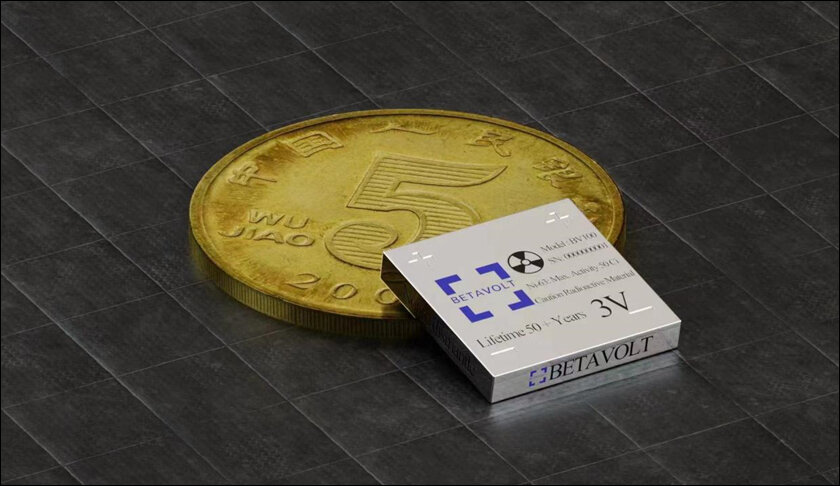
(Image Credit: Betavolt Technlogy)
CHINA’S NEVER CHARGE MOBILE NUCLEAR BATTERY:
Betavolt New Energy Technology, a Chinese startup based in Beijing has made a nuclear battery smaller than a coin, that it claims is both safe and can power devices without needing to be charged for 50 years. The battery delivers 100 microwatts and 3V power using radioactive Nickel-63 as the energy source and a diamond semiconductor as the energy converter. The supply is DC power in this modular battery consisting of a stack of diamond semiconductor converters and 2μm thick Nickel-63 sheets on top of one another. The minimum size of this atomic energy battery is 3x3x0.03㎜ (2 converters and 1 layer of nickel 63 atop one another) with multiple module groups that can be connected in series and parallel, while the power from it can be configured from a few microwatts to several watts. The company plans to produce a more powerful 1-watt power battery by 2025.
The potential use of such a battery is infinite. It can power everything, from pacemakers in hearts to planes, spaceships, EVs and a whole host of other instruments without needing to be charged. This can transform both our understanding of the concept of energy and the very geopolitics of the world which for a century has been shaped by the means of energy creation: first coal, oil and gas and now renewables.
Yet, new as it may sound, the idea is old.
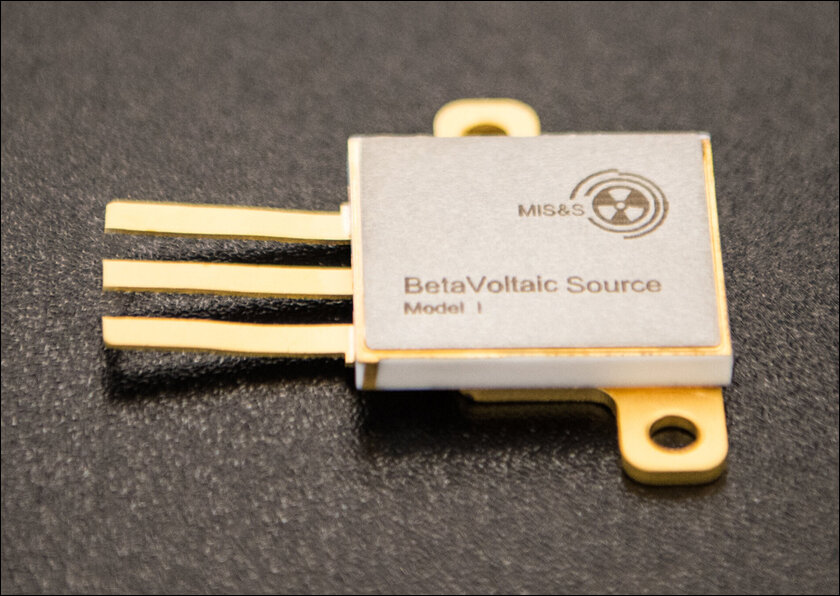
ORIGINS OF THE NUCLEAR BATTERY:
Ever since the beginning of the nuclear age, when man harnessed the power of atoms and radioactivity after realising this was the most concentrated source of endless power, the idea of using nuclear energy to power everything at home and outside was proposed. The issue has always been safety since it is also the most destructive power known to man. Keeping a version of that at home, office and school, no matter how tiny, is psychologically hard to accept.
Yet nuclear power plants not only power entire cities, companies have also successfully made miniature, portable machines to power neighbourhoods. Its pocket version rides on extensive decades-long research on various types of nuclear batteries that could be used to power small devices from medical implants, remote sensors and gadgets used in space.
The first time such a battery was proposed and attempted to be made, was in 2016 when a team of physicists and chemists from the University of Bristol made a ‘diamond battery’ that used Carbon-14 in the form of diamond-like carbon as beta radiation source. Later prototypes found nickel-63 to be a better source with diamond non-electrolytes/semiconductors for energy conversion.
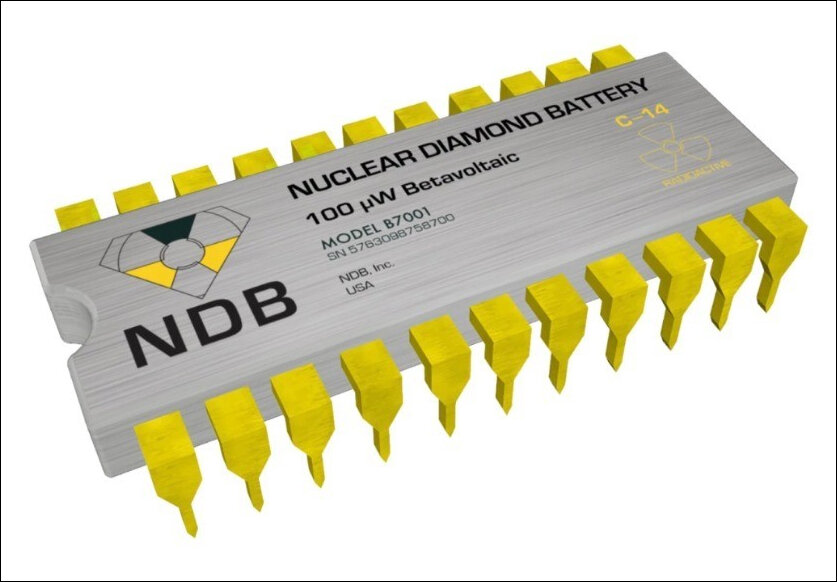
TYPES OF NUCLEAR BATTERIES:
Research since and some from before, resulted in these types of nuclear batteries.
- Radioisotope Thermoelectric Generators (RTGs): RTGs – which have been around for decades – use the heat generated by radioactive decay to produce electricity. Plutonium-238 was commonly used in RTGs but the concerns regarding plutonium availability and proliferation prevented them from being adopted widely.
- Betavoltaics: This technology directly converts beta particles emitted by radioactive isotopes like tritium into electricity via specially designed semiconductors. Tritium batteries are already powering some medical devices and offer longer lifespans than conventional batteries.
- Diamond Batteries: The battery developed by the Chinese researcher could be called a Diamond Battery as they use the potential of diamonds as semiconductor materials for converting nuclear energy. Diamond’s exceptional physical properties make it a promising candidate for highly efficient and long-lasting batteries.
- Microfluidic Batteries: This is one of the new technologies being worked upon by scientists. It involves miniaturized channels for manipulating fluids containing radioactive materials. By controlling the flow, researchers hope to achieve precise control over energy generation and potentially even recharge these batteries.
- Solid-State Batteries: Replacing liquid electrolytes with solid-state materials can improve safety and stability while increasing power density. Some research explores incorporating radioactive materials into solid-state electrolytes for nuclear batteries.
The idea is to reduce the form factor of these nuclear batteries enough to fit into your pocket. One startup is even trying to use nuclear waste in these in hopes of solving two problems with one invention – power a small device and nuclear waste disposal.
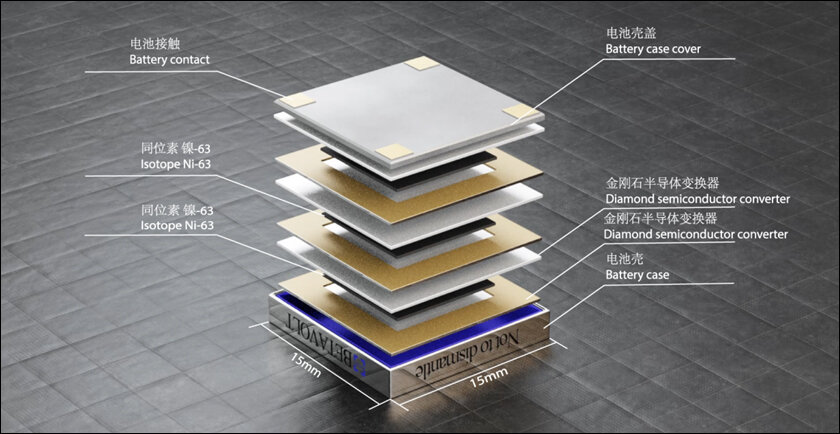
DIFFERENCE BETWEEN NUCLEAR POWER PLANTS AND NUCLEAR BATTERIES:
Nuclear power plants are said to be the most expensive and riskiest ways to boil water. That’s because sophisticated though the tech may be, what the current crop of highly risky, nuclear power plants do, is boil water which powers turbines that then make electricity. This is the most irregular, dangerous, wasteful, and inefficient use of nuclear power. If you consider that nuclear power, even with its thousands of years of half-life is a limited resource, you could call this a criminal waste of precious natural resources of the planet.
In contrast, what the tiny nuclear battery from the Chinese company and others are trying to do, is to use radioactivity to directly make electricity instead of going about it in a roundabout way. Considering that we urgently need sustainable energy sources to cope with issues like climate change, such long-lasting miniature nuclear power batteries will become an indispensable tool not just in the fight against climate change, but could also power an increasingly power-hungry world. If scientists manage to make batteries using radioactive waste whose disposal is a headache, this would solve two problems with one stone.
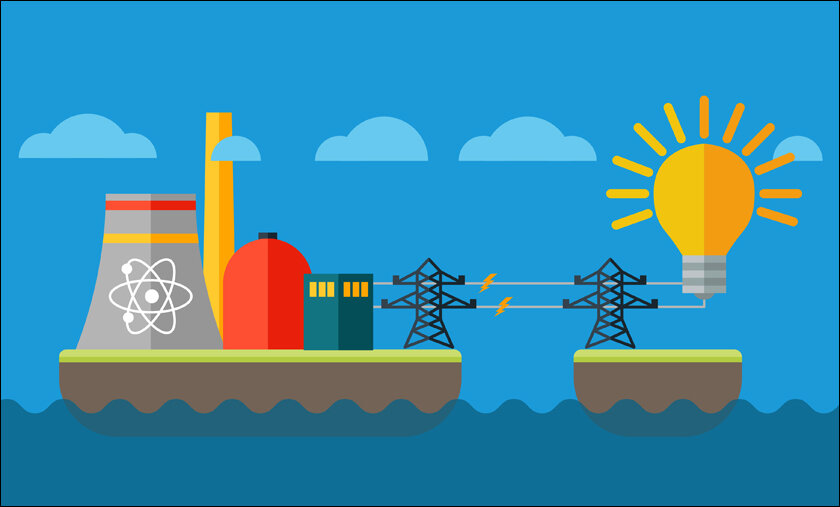
HOW A NUCLEAR BATTERY COULD CHANGE THE WORLD:
A tiny nuclear battery to power your devices not for a year or decade, but centuries or millennia without needing to be charged ever, opens up the imagination to an entirely new world of potential. First and foremost, such batteries would become properties that one could will to one’s kids. It will become a sort of investment for people like buying gold is right now. But instead of that useless metal, we’d have something immensely useful in this.
A human can go entirely off the grid without even needing to be in touch with another as his life’s energy needs could be solved by such a battery. The technology needed to build such a battery on a mass scale will be entirely different from what we have in the world today where companies deliberately make devices that do not last long. Instead, we will have a new paradigm where the reverse would come true: the ability to make something that could last decades or hundreds of years would become key. These batteries will also need to have a different sort of warranty, instead of the typical few months or years of warranty. These could alter capitalism as such a battery would mean the end of the consumption pattern that fuels capitalism: we indirectly buy multiple batteries every few years via the devices we need and throw them away when done.
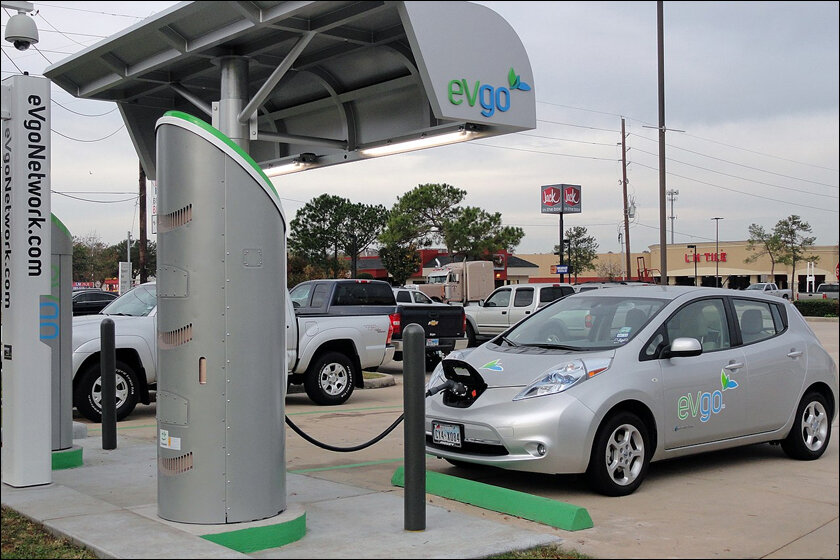
The entire EV space will be transformed. We will not need to go to the fuel or recharge stations ever. Today, when we buy a device – mobile, tablets, laptops etc. our priority is features. With nuclear batteries around, we’ll buy them first and then the devices to go with them and fit them. Thus, devices will become modular – something environmentalists have been demanding for long.
These are just some basic ways in which pocket nuclear batteries can potentially change our world forever. As they become more ubiquitous, more uses would be found and the world as we know it, would permanently be altered.

DANGERS OF SUCH A BATTERY:
The problem with anything nuclear, is the science of it. It is easy to find destructive uses for anything as every nuclear explosion proves, but really difficult to use the same energy for construction as the unfeasibility of every nuclear battery technology so far has shown. The science of nuclear energy is also tough. Nuclear power plants were built before the safety of the science and its construction was made foolproof causing many nuclear disasters– from Chernobyl to Fukushima. With nuclear batteries too the danger of greedy companies bringing such a battery out before we have figured out ways to safely use it and make it glitch free, is real.
And if something does go wrong e.g. there is a radiation leak causing someone to go sick, or like normal batteries, one of these explodes in the pocket of a person, the optics could be so bad it might lead to shutting down the industry forever. Science, in this case, will have to take precedence over capitalistic greed for this technology to come out and truly change the world as we know it. This means regulation has to be strong, but how do you regulate something like this without hurting the science and thus the world?
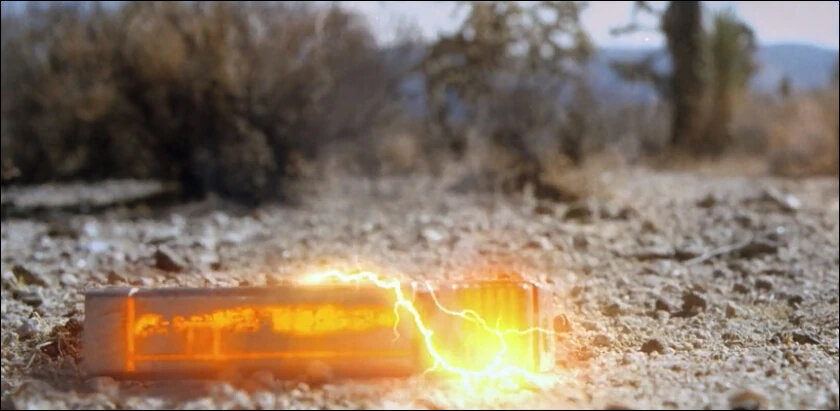
In ‘Terminator: Rise of the Machines’, one of the batteries of the T100 malfunctions, prompting the robot to take it out and throw it away, leading to an explosion. Like the Terminator and Matrix franchises have become the oracle of AI doomsdayism, nuclear battery makers must keep the image of the exploding batteries in this film in mind. For if one were ever to explode harming anyone, it could lead to the end of this technology.
In case you missed:
- Nuclear Power: Tech Giants’ Desperate Gamble for AI
- Would an Electric Plane Have Reduced the Air India Crash Death Toll?
- A Manhattan Project for AI? Here’s Why That’s Missing the Point
- Alchemists’ Treasure: How to Make Gold in a Particle Accelerator (and Why You Can’t Sell It, Yet)
- Why a Quantum Internet Test Under New York Threatens to Change the World
- Project Stargate: Dubious Origins in the 1970s to AI Goldrush in 2025
- The Path to AGI is Through AMIs Connected by APIs
- When AI Meets Metal: How the Marriage of AI & Robotics Will Change the World
- How Lionsgate-Runway Deal Will Transform Both Cinema & AI
- How Old Are We: Shocking New Finding Upends History of Our Species



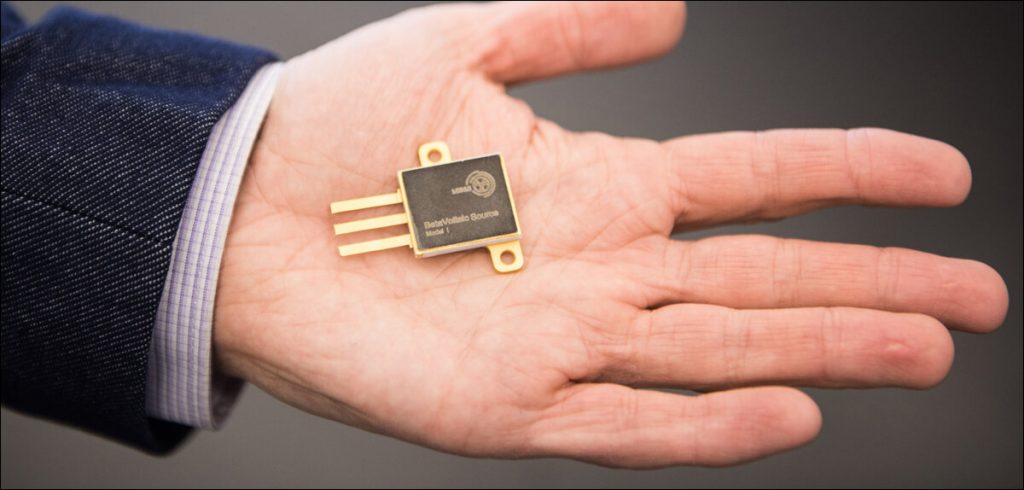






1 Comment
wow, very informative one its cool.